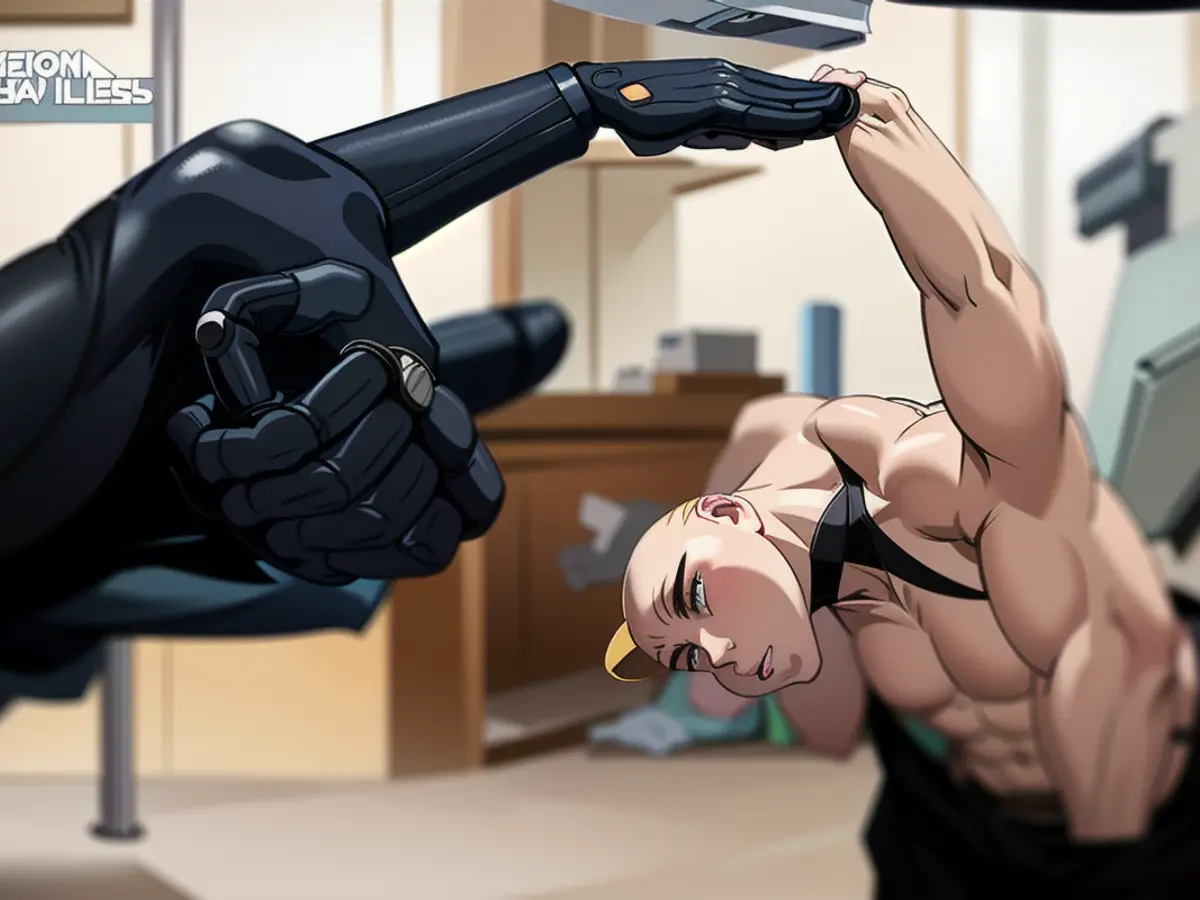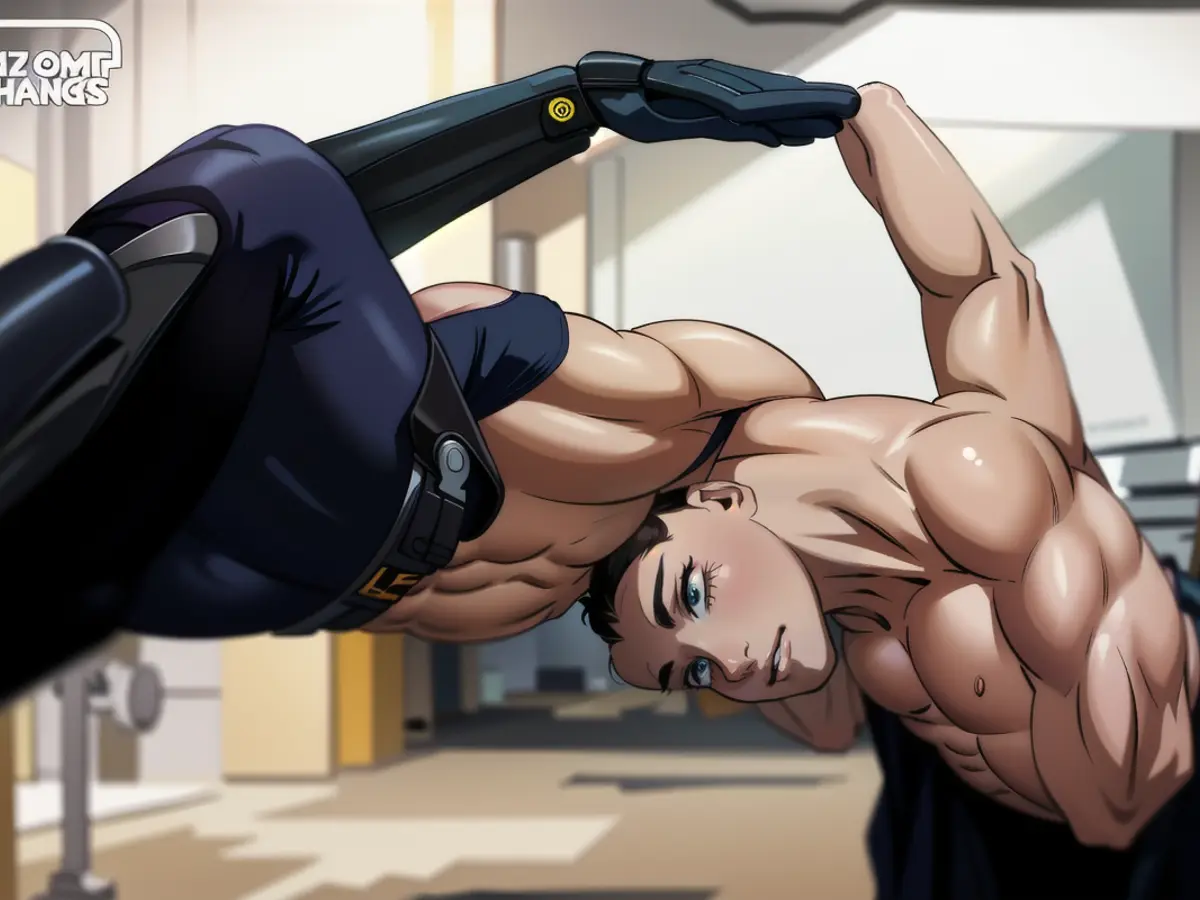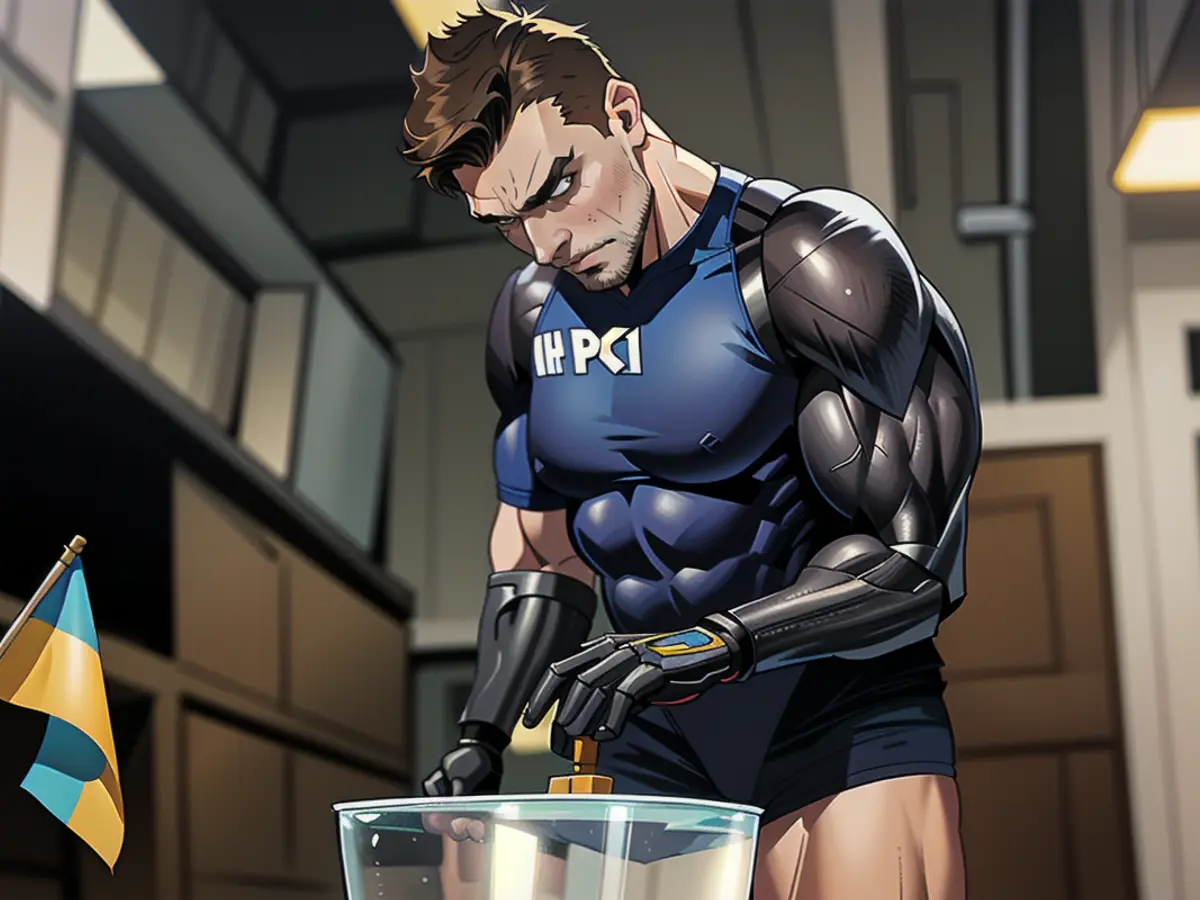AI and bionics enable injured Ukrainian soldiers to regain their fighting abilities.
This is a widely known predicament for Ukrainian soldiers. Since the start of the conflict, approximately 20,000 Ukrainians have lost limbs. These types of injuries usually end military careers. However, advancements in the field of bionics are assisting some veterans to return to the battlefield.
Kucherenko shares his experience, saying, "For me, these prosthetics were made in a way that I'm going back to the army."
Kucherenko was equipped with two new bionic hands from Esper Bionics, a Ukrainian-US company specializing in cutting-edge prosthetics.
Artificial intelligence (AI) is revolutionizing various sectors, and it's also leading to innovations in the realm of bionic prosthetics. AI or machine learning is helping patients who have lost limbs regain their abilities - and potentially even perform actions they couldn't do with human limbs. This is what the vision held by the members of Esper Bionics.
Dima Gazda, CEO of Esper Bionics, talks about the potential of AI in bionics: "I think AI will be the next step in bionics."
Gazda, a doctor from Ukraine, collaborated with his team for several years to create the Esper Hand. He states, "Our systems were built for AI from the beginning."
Their bionic hand uses AI to quickly learn the user's behavior and choose grips that the user will likely need.
"If I pick up a cup from the table several times, tomorrow, the system will understand," says Gazda. This AI-assisted hand can also detect muscle activity.
It's not just AI that is helping users regain their abilities faster. Bionic prosthetics are also being designed and manufactured more accurately to replicate human limbs. The Esper Hand has six motors - one for each finger and two for the thumb - allowing each finger to move independently. Esper claims that 70 Ukrainian soldiers are serving with Esper Hands, but the demand far surpasses the supply. The company estimates that there are currently around 170 people on a waiting list. With the unceasing fighting in Ukraine, the number of individuals in need will continue to increase.
A clinic in Minneapolis houses the headquarters of the non-profit Protez Foundation. There, a group of Ukrainian veterans come every day to receive prosthetic fittings and training. Each veteran has lost at least one limb, some even more. Their day-to-day itinerary involves prosthetic adjustments, hands-on training, and personalized practice sessions like learning to stack blocks with their new prosthetic hands.
The clinic is led by Yakov Gradinar, the chief medical officer at the Protez Foundation. He is a Ukrainian prosthetist living in Minnesota who co-founded Protez a few months after the war started in 2022. "Protez" means "prosthetic" in Ukrainian.
"You search for meaning in your life," Gradinar said. "Ukraine needed prosthetics, and I'm a prosthetist. I can help."
Protez Foundation and Esper Bionics collaborate through a special program to assist Ukrainians. Esper sells its Esper Hands (which typically cost around $20,000) to Protez at manufacturing costs, and Protez fits them to beneficiaries for free.
Gradinar has observed the rapid adaptation of veterans to the Esper Hands. His patient Valera Kucherenko, who lost both arms in a grenade explosion, is now back in Ukraine with intentions of reintegrating into the army and training soldiers.
The determination and willpower of the veterans play a significant role in their success. But so does the technology.
"We often discuss the negative aspects of AI," the prosthetist says, "but we don't talk about the aspect that it can adapt itself." The hope is the technology will improve and become smarter.
Esper is currently working on a leg model and an exoskeleton. The ultimate objective for Esper is to create medical devices for everyone's benefit, but their primary focus at this time is aiding those in Ukraine.
"Our dedication is to help people with the most pressing need," Gazda affirms. "I believe by collaborating with the Protez Foundation, we are making Ukraine stronger."


Read also:
- Telefónica targets market launch for hologram telephony
- vzbv: Internet companies continue to cheat despite ban
- Telefónica targets market launch for hologram telephony in 2026
- AI and climate in schools: how to keep lessons up to date
In the context of assisting injured soldiers, technology is playing a significant role. The CEO of Esper Bionics, a company specializing in cutting-edge prosthetics, believes that AI will be the next step in bionics development. (tech, business)
The collaboration between Esper Bionics and the Protez Foundation is helping Ukrainian veterans regain their abilities with the use of AI-assisted bionic prosthetics. (tech, business)
Source: edition.cnn.com








